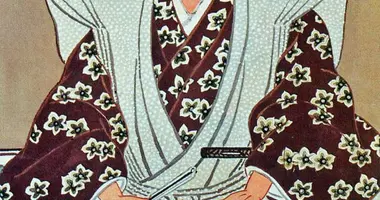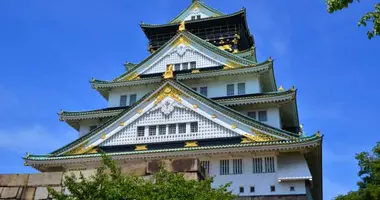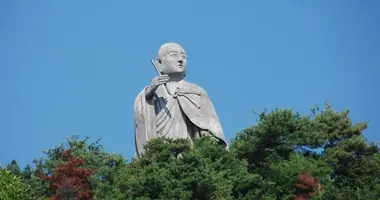Toyotomi Hideyoshi: The Unifier of Japan
Early Life and Rise to Power Under Oda Nobunaga
- Born as Kinoshita Tōkichirō in Nakamura, Owari Province, Hideyoshi's early life was marked by poverty and hardship. As a young man, he joined the army of the powerful warlord Oda Nobunaga, where his exceptional fighting skills and quick wit soon caught the attention of his lord. Hideyoshi rapidly climbed the military ranks, becoming one of Nobunaga's most trusted generals and playing a crucial role in many of his lord's victories.
- In 1573, after successful campaigns against the Azai and Asakura clans, Nobunaga appointed Hideyoshi as daimyō of three districts in Ōmi Province. Under Hideyoshi's administration, the region's firearms production increased dramatically, contributing to Nobunaga's military might. Hideyoshi further proved his value to Nobunaga through his diplomatic skills, convincing many rival samurai to submit to his lord's authority.
Becoming Japan's Military Supremo
- In 1582, when Oda Nobunaga was betrayed and forced to commit suicide by his vassal Akechi Mitsuhide, Hideyoshi swiftly avenged his lord's death. He defeated Mitsuhide at the Battle of Yamazaki and began consolidating power for himself. By forming alliances with key figures and eliminating rivals, Hideyoshi emerged as the de facto leader of Japan.
- To legitimize his rule, Hideyoshi sought the favor of the imperial court. He rebuilt the imperial palace in Kyoto, provided financial support for court ceremonies, and even claimed descent from the Shinto sun goddess. In 1585, Hideyoshi was appointed kampaku (imperial regent), and the following year, he was granted the prestigious surname Toyotomi by Emperor Go-Yōzei.
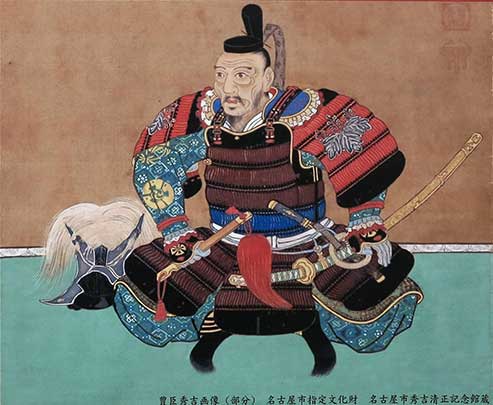
Toyotomi Hideyoshi
Key Domestic Policies and Reforms
- As Japan's ruler, Hideyoshi implemented several significant policies and reforms to consolidate his power and stabilize the nation:
- Land surveys and tax reforms: Hideyoshi conducted extensive land surveys to determine accurate tax liabilities and rice production. This led to a more efficient taxation system and increased state revenue.
- Establishment of a rigid class system (shi-nō-kō-shō): In 1591, Hideyoshi introduced a strict four-tiered class system consisting of warriors, farmers, artisans, and merchants. This system restricted social mobility and ensured stability.
- Sword hunt and weapons ban: To prevent peasant uprisings, Hideyoshi confiscated weapons from commoners in 1588, limiting the right to bear arms to the samurai class.
- Promotion of arts and culture: Hideyoshi patronized the arts, particularly the tea ceremony, Noh theater, and painting. This helped foster the development of Momoyama culture.
Hideyoshi the Builder: Famous Castles and Fortifications
To secure his power and defend his realm, Hideyoshi ordered the construction and renovation of numerous castles and fortifications throughout Japan. Some of the most notable examples include:
- Himeji Castle: Hideyoshi built the first version of this iconic castle in 1581, which was later remodeled by Ikeda Terumasa in the early 17th century.
- Momoyama Castle: This castle, located in Kyoto, served as Hideyoshi's base and gave its name to the Azuchi-Momoyama period.
- Osaka Castle: Constructed in 1586, this impressive castle featured a seven-story keep and massive stone walls.
- Fushimi Castle: Built in 1594 outside Kyoto, this lavishly decorated castle was known as the "golden palace."

View of the reconstructed Osaka Castle - Toyotomi Hideyoshi's power base
Failed Invasions of Korea
In 1592 and 1597, Hideyoshi launched two ultimately unsuccessful invasions of Korea with the intention of conquering Ming China. Despite initial successes, the Japanese forces were eventually forced to withdraw due to the brilliant naval strategies of Korean Admiral Yi Sun-sin, the intervention of Ming Chinese reinforcements, and supply line disruptions.
The failed invasions had far-reaching consequences, damaging relations between Japan and Korea, weakening the Ming Dynasty, and depleting Hideyoshi's resources. However, the forced relocation of skilled Korean artisans to Japan during this period helped spur the development of Japanese ceramic production.
Hideyoshi's Legacy
Toyotomi Hideyoshi died in 1598, leaving his young son Hideyori as his successor. However, political rivalries among the regents Hideyoshi had appointed led to a power struggle. Ultimately, Tokugawa Ieyasu emerged victorious and established the Tokugawa Shogunate, which ruled Japan for over 250 years.
Despite the short-lived nature of his dynasty, Hideyoshi's impact on Japanese history was profound. His unification of the country, social and political reforms, and cultural patronage helped shape the course of Japan's development for centuries to come. Today, Hideyoshi remains a celebrated figure in Japanese history, remembered for his strategic brilliance, leadership, and the indelible mark he left on the nation.
In the words of a popular Japanese saying, "Nobunaga mixed the cake, Hideyoshi baked it, and Ieyasu ate it," underscoring the vital role each of these three great unifiers played in Japan's history. Toyotomi Hideyoshi's legacy as the man who completed the unification of Japan and laid the foundations for the country's future continues to inspire and fascinate to this day.
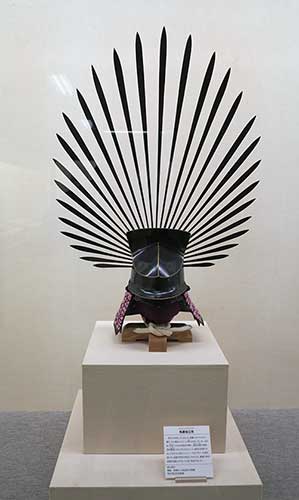
Toyotomi Hideyoshi's distinctive battle helmet
Toyotomi Hideyoshi, born to a humble peasant family in 1537 CE, rose through the ranks to become one of Japan's most powerful and influential figures. Through his military prowess, strategic thinking, and shrewd diplomacy, Hideyoshi succeeded in unifying Japan after more than a century of civil war and strife. His efforts to reorganize Japanese society, instigate reforms, and expand the nation's borders left a lasting impact on the country's social and political structure.
